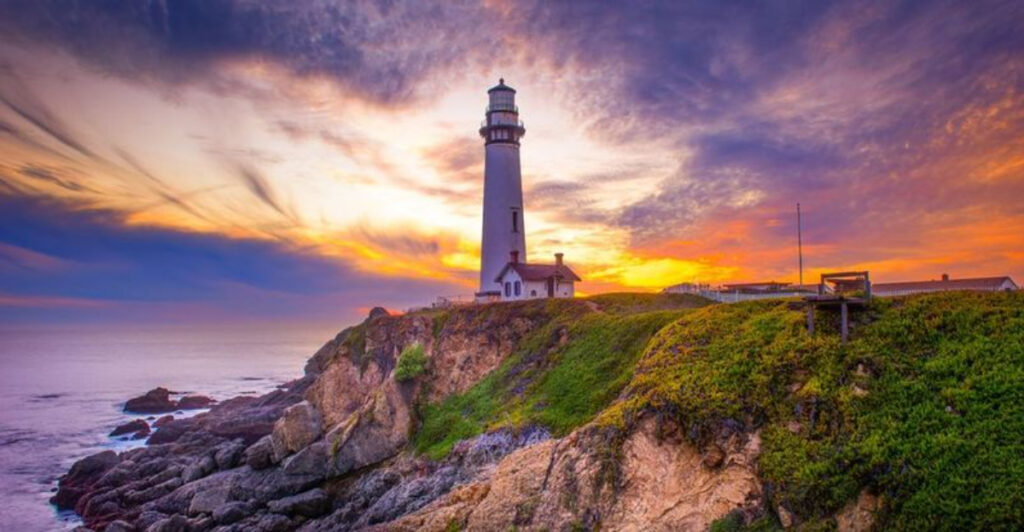Lighthouses stand as beacons of safety along America’s vast coastlines, their towering structures capturing the imagination of travelers and photographers alike. These historic landmarks have guided sailors through treacherous waters for centuries, combining practical purpose with stunning architectural beauty. From Maine’s rocky shores to California’s dramatic cliffs, America’s lighthouses offer some of the most breathtaking coastal views in the nation.
1. Portland Head Light, Maine
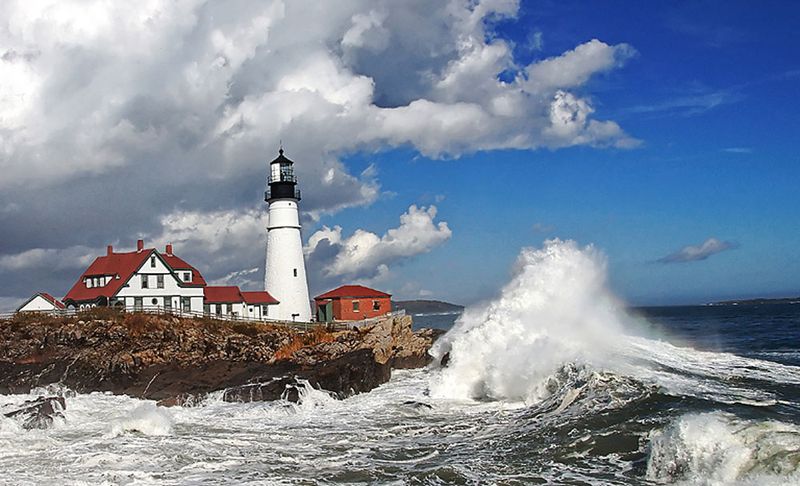
Standing sentinel since 1791, this granite guardian witnessed the birth of our nation. Commissioned by President George Washington himself, Portland Head Light ranks among America’s oldest operational beacons.
Waves crash dramatically against the rocky Maine coastline below, creating a photographer’s paradise in any season. The classic white tower with its red-capped lantern room perfectly complements the rugged Atlantic backdrop.
The 80-foot tower sits within Fort Williams Park, where visitors can explore museum exhibits housed in the former keeper’s quarters. Don’t miss the iconic view from the south, capturing both lighthouse and coastline in one magnificent frame.
2. Heceta Head Lighthouse, Oregon
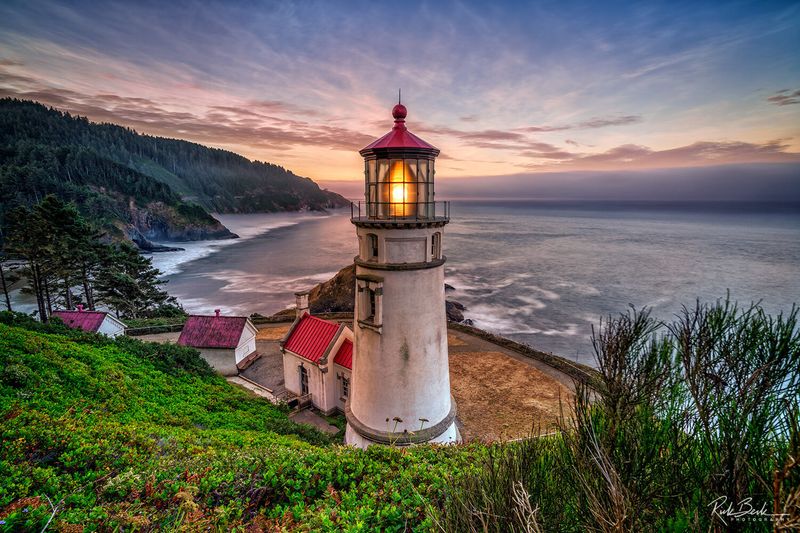
Romance and mystery cling to Heceta Head like the coastal fog that often embraces its 56-foot tower. Perched 205 feet above the churning Pacific, this 1894 masterpiece casts the strongest light on Oregon’s coast, visible 21 miles out to sea.
The adjacent Queen Anne-style keeper’s house now operates as one of America’s most distinctive bed-and-breakfasts. Guests report occasional ghostly encounters with “Rue,” a former keeper’s wife who reportedly never left her post.
Surrounded by old-growth forest and dramatic cliffside views, the half-mile trail to the lighthouse rewards visitors with stunning vistas. Sea lions often bark from the rocks below, adding nature’s soundtrack to this picturesque scene.
3. Cape Hatteras Lighthouse, North Carolina
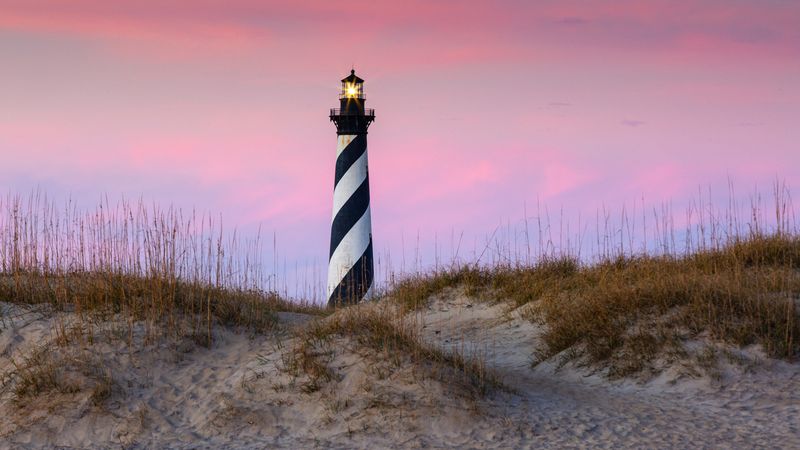
Spiraling boldly against Carolina’s blue skies, the black-and-white striped giant of the Outer Banks commands attention. At 198 feet, Cape Hatteras stands as America’s tallest brick lighthouse, a true marvel of 19th-century engineering.
The distinctive candy-cane spiral pattern wasn’t just for show – these bold markings helped sailors identify the lighthouse during daylight hours. In 1999, the entire structure was moved 2,900 feet inland to protect it from the encroaching Atlantic.
Adventurous visitors can climb all 257 steps to the observation deck for panoramic views of the barrier islands. The surrounding national seashore offers pristine beaches where wild horses occasionally roam, adding to the lighthouse’s magical setting.
4. Split Rock Lighthouse, Minnesota
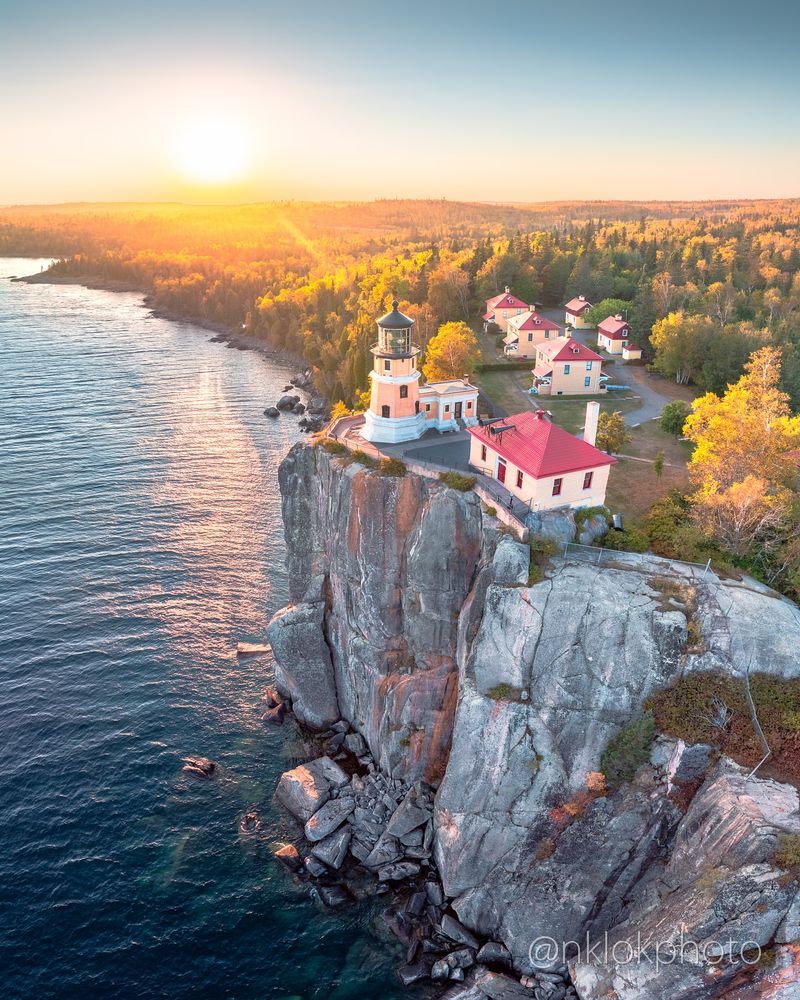
Crowning a 130-foot cliff above Lake Superior’s northern shore, Split Rock breaks the lighthouse stereotype by standing nowhere near an ocean. Built following a devastating 1905 storm that wrecked 29 ships, this inland beacon guided freighters carrying iron ore across the massive lake.
The octagonal tower’s yellow brick and fog-horn building create a striking contrast against the deep blue waters below. During autumn, the surrounding birch and maple forest erupts in fiery colors, creating a photographer’s dream landscape.
Each November 10th, the lighthouse holds a special ceremony lighting the beacon in memory of the Edmund Fitzgerald shipwreck. The haunting tribute draws visitors who brave Minnesota’s early winter chill to witness this moving memorial.
5. Pigeon Point Lighthouse, California
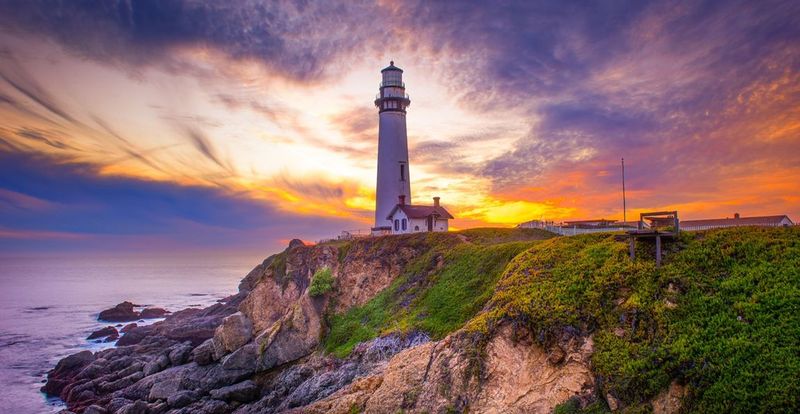
Elegant white-washed walls soar 115 feet above the Pacific, making Pigeon Point one of America’s tallest lighthouses. Since 1872, this coastal sentinel has guided ships along California’s notoriously foggy central coast.
The grounds offer spectacular whale-watching opportunities during migration seasons. Gray whales, humpbacks, and even blue whales can sometimes be spotted from the lighthouse’s dramatic perch.
Nearby tide pools teem with colorful sea stars, anemones, and hermit crabs at low tide. For the ultimate experience, visitors can book the historic hostel in the former keeper’s quarters and fall asleep to the rhythm of crashing waves just steps from this magnificent maritime monument.
6. Thomas Point Shoal Lighthouse, Maryland

Floating elegantly above Chesapeake Bay’s choppy waters, Thomas Point Shoal represents the last surviving screw-pile lighthouse in its original location. Unlike traditional towers, this hexagonal cottage-style structure perches on iron pilings screwed directly into the bay floor.
The distinctive white hexagonal building with its red roof has become an icon of Maryland’s maritime heritage. Built in 1875, it continues to guide boats through the bay’s challenging shoals and shifting sandbars.
Boat tours offer the only way to visit this National Historic Landmark up close. From a distance, the lighthouse appears to hover magically above the water, creating an almost dreamlike scene that photographers and maritime enthusiasts cherish.
7. Big Sable Point Lighthouse, Michigan
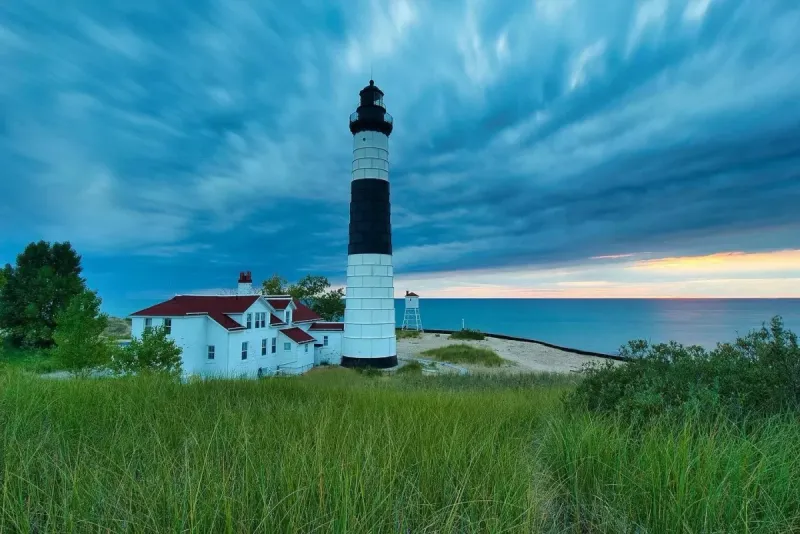
Rising dramatically from Michigan’s golden dunes, Big Sable Point’s striking black and white tower creates an unforgettable silhouette. The remote location requires a scenic 1.8-mile hike through Ludington State Park, making the lighthouse reveal all the more rewarding.
Built in 1867, the 112-foot tower originally sported a natural brick exterior. Its distinctive black and white daymark wasn’t added until 1900, creating the iconic look visitors recognize today.
Lake Michigan’s ever-changing moods provide a dynamic backdrop, from peaceful summer sunsets to dramatic autumn storms. Volunteer keepers maintain the historic property from April through October, welcoming hikers who complete the sandy trail journey with stories of the lighthouse’s colorful past.
8. Bodie Island Lighthouse, North Carolina
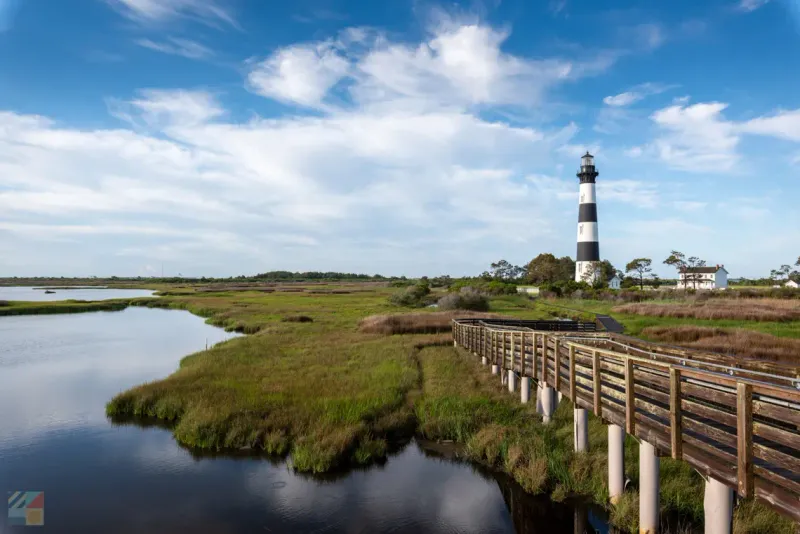
Horizontal black and white stripes distinguish Bodie Island’s 156-foot tower from its spiral-striped neighbor at Cape Hatteras. The distinctive pattern serves as a daymark, helping sailors identify their position along North Carolina’s treacherous Outer Banks.
Surrounded by marshland and maritime forest, the lighthouse setting offers exceptional birdwatching opportunities. The nearby wildlife refuge hosts tundra swans, snow geese, and numerous wading birds, creating a paradise for nature photographers.
Recent restoration work has returned the 1872 lighthouse to its original glory. Visitors can now climb the 214 steps to the top for panoramic views of the Atlantic Ocean and Pamlico Sound. At night, the powerful first-order Fresnel lens still casts its beam 19 miles out to sea.
9. Marshall Point Lighthouse, Maine
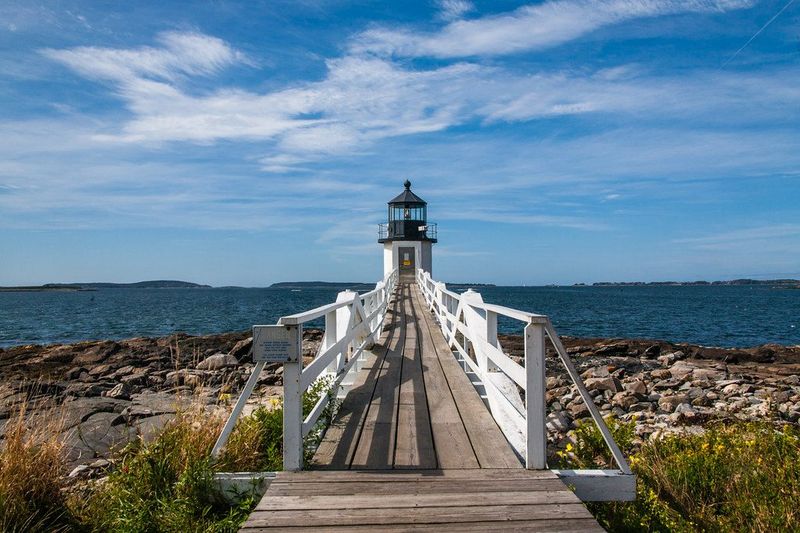
Hollywood immortalized this charming lighthouse when Tom Hanks ran along its distinctive wooden walkway in “Forrest Gump.” The humble white tower may stand just 31 feet tall, but what it lacks in height, it makes up for in character and scenic beauty.
Built in 1832, Marshall Point guards the entrance to Port Clyde Harbor. The granite-based lighthouse connects to shore via a unique wooden boardwalk that seems to float above the rocky coastline, creating one of Maine’s most photographed maritime scenes.
The former keeper’s house now houses a museum filled with local maritime artifacts and lighthouse memorabilia. Visitors often linger to watch lobster boats coming and going from the harbor, experiencing authentic coastal Maine life against this picturesque backdrop.
10. Boston Light, Massachusetts
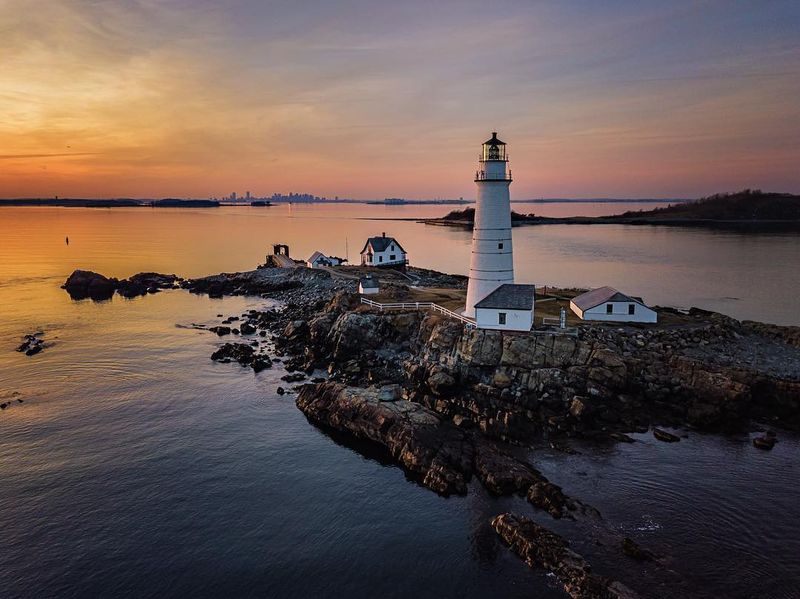
America’s oldest continually used lighthouse station has guided ships into Boston Harbor since 1716. The current 89-foot tower, rebuilt in 1783 after British forces destroyed the original during the Revolutionary War, stands as a living monument to maritime history.
Boston Light holds the distinction of being the last manned lighthouse in America. Though automated in 1998, the Coast Guard maintains a keeper who continues traditions dating back three centuries.
Located on Little Brewster Island, the gleaming white tower offers spectacular views of Boston’s skyline across the harbor. Boat tours allow visitors to climb the 76 spiral steps to the lantern room, where the 1859 second-order Fresnel lens still magnifies light visible for 27 nautical miles.
11. Nauset Light, Cape Cod
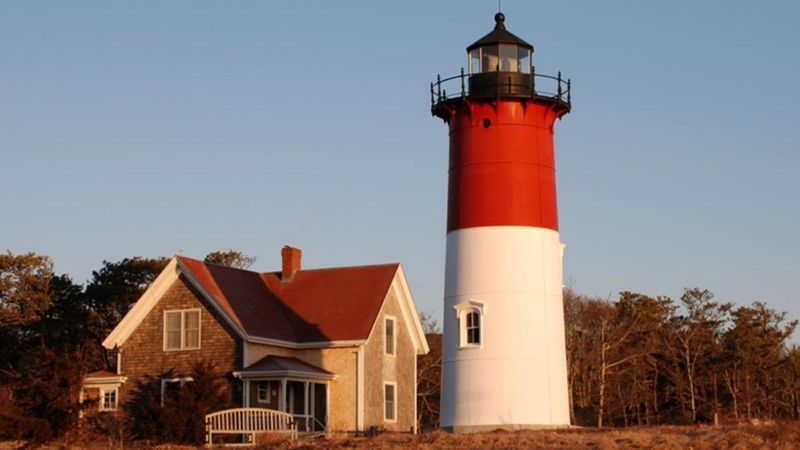
Famous as the logo on Cape Cod potato chip bags, Nauset Light’s cheerful red and white tower brings a splash of color to Massachusetts’ sandy shores. Originally one of three “sisters” built in 1877, this 48-foot lighthouse was moved from its original location in 1923 to replace an aging wooden tower.
The striking color scheme wasn’t just for aesthetics. The red-and-white daymark helped sailors distinguish Nauset from other nearby lighthouses, preventing potentially fatal navigation errors along Cape Cod’s dangerous shoals.
Today, volunteers maintain the lighthouse and offer tours from spring through fall. The adjacent beach provides perfect views of the Atlantic, especially at sunrise when golden light bathes the iconic tower in warm hues.
12. St. Augustine Lighthouse, Florida
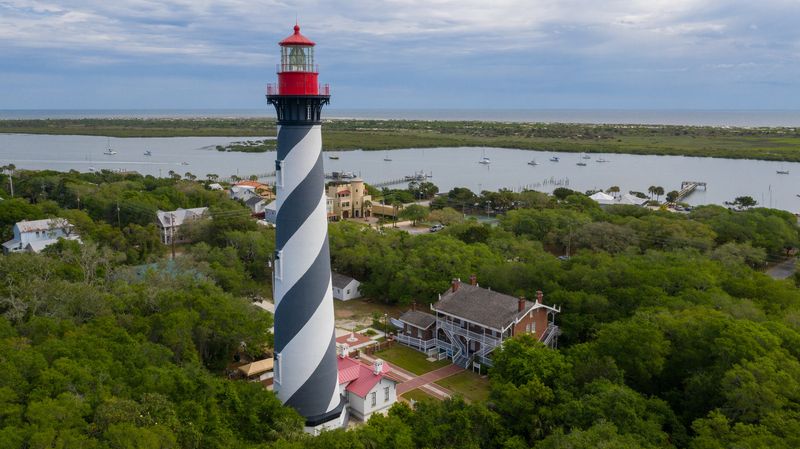
Rising 165 feet above Florida’s historic coast, St. Augustine’s striking black-and-white spiral tower commands attention against azure skies. Built in 1874, the lighthouse replaced an earlier structure that succumbed to shoreline erosion.
Ghost hunters flock here for reported paranormal activity linked to tragic deaths during construction. The lighthouse frequently appears on television shows investigating the spirits of two young girls who allegedly drowned while playing in a construction cart.
The subtropical setting surrounds the tower with lush palms and flowering plants year-round. Climbing the 219 steps rewards visitors with breathtaking views of St. Augustine, America’s oldest city, and the Atlantic Ocean stretching to the horizon. At night, the powerful first-order Fresnel lens still casts its beam 24 miles out to sea.
13. Point Reyes Lighthouse, California
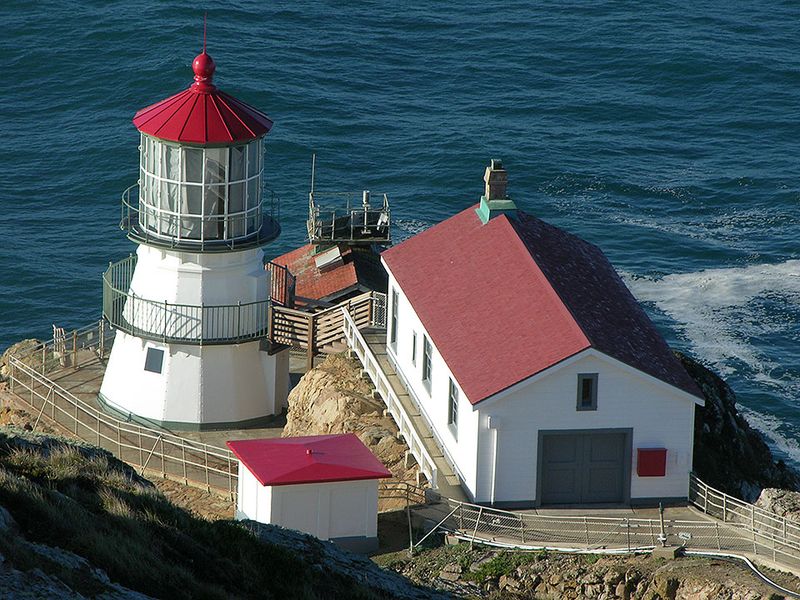
Clinging to a cliff 600 feet above the Pacific, Point Reyes Lighthouse required the most dramatic construction of any American beacon. Workers had to lower materials down the steep headland to build this unique structure, which sits 300 steps below the clifftop parking area.
Unlike most lighthouses that reach skyward, Point Reyes was built low to stay beneath the frequent fog layer. The powerful first-order Fresnel lens and clockwork mechanism that once rotated it remain on display inside the restored 1870 structure.
The surrounding Point Reyes National Seashore offers some of California’s most spectacular wildlife viewing. Gray whales migrate past the lighthouse from December through April, while elephant seals lounge on nearby beaches and tule elk roam the headlands.
14. Tybee Island Lighthouse, Georgia
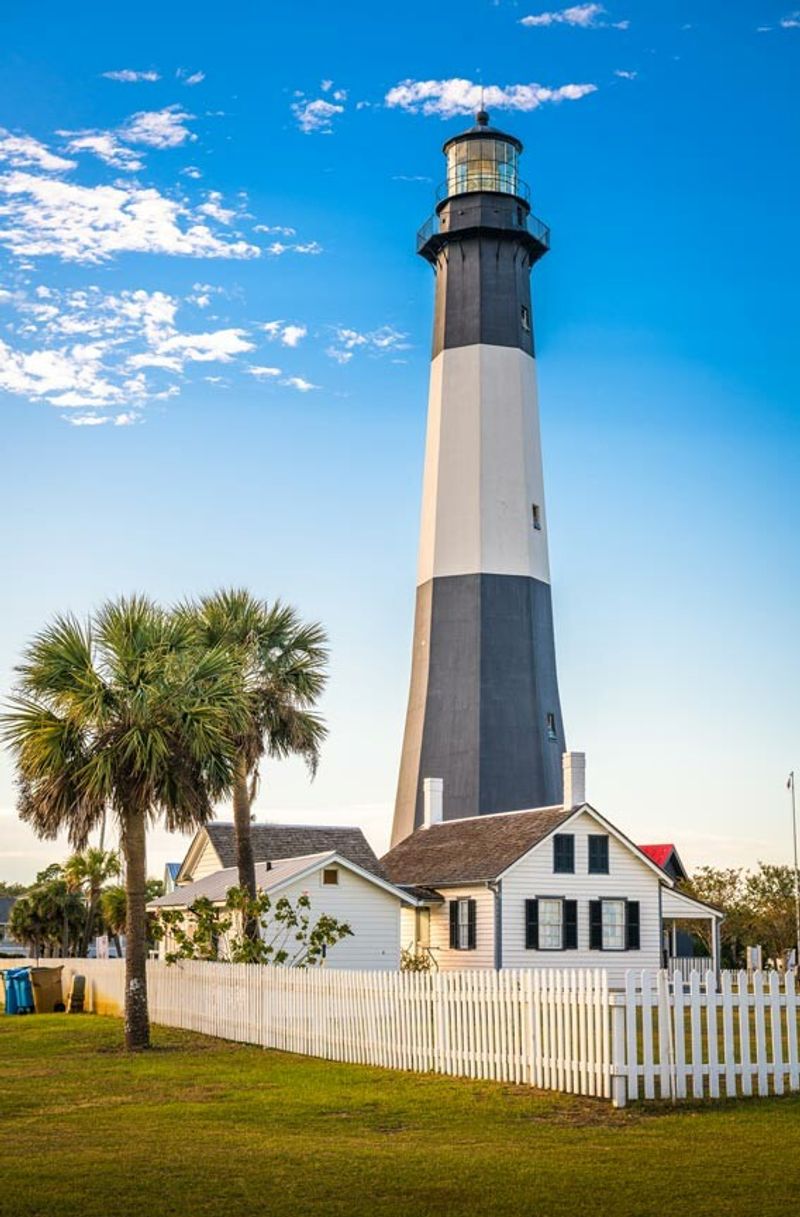
Southern charm radiates from Georgia’s oldest and tallest lighthouse, standing watch over Tybee Island since 1736. The current 145-foot structure, completed in 1867, sports a classic black-and-white color scheme that stands out beautifully against Georgia’s frequently dramatic skies.
The lighthouse compound includes several historic buildings, including three keeper’s cottages. Visitors can explore the fully restored head keeper’s home, now a museum showcasing coastal Georgia’s maritime history.
Climbing the 178 cast-iron steps rewards with sweeping views of the Atlantic Ocean, Savannah River entrance, and surrounding marshlands. Sunset transforms the scene into a photographer’s dream as golden light bathes the tower and the adjacent beach takes on rosy hues.
15. Cape Neddick “Nubble” Lighthouse, Maine
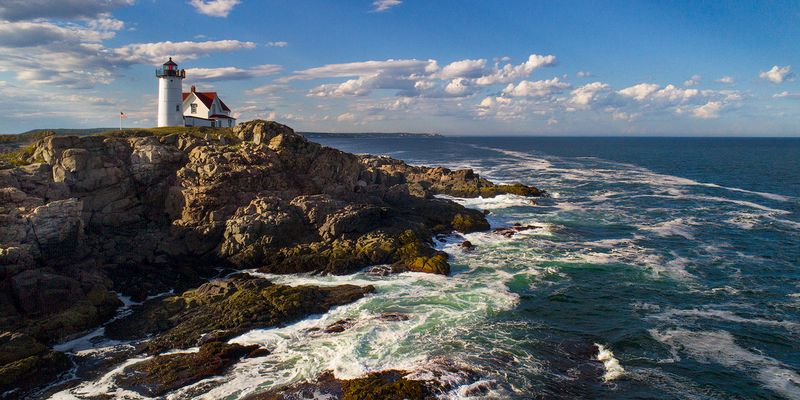
Perched on a tiny rocky islet just off Maine’s southern coast, Nubble Light creates one of America’s most instantly recognizable maritime scenes. The compact white tower with attached keeper’s house seems to defy the Atlantic’s power from its precarious perch.
During December, thousands visit for the famous “Christmas at the Nubble” when the lighthouse and outbuildings glow with festive lights. This magical display reflects across the water, creating a winter wonderland that has become a New England holiday tradition.
Despite being tantalizingly close to shore, the lighthouse remains inaccessible to visitors. This isolation has preserved its historic character while adding to its mystique. Sohier Park on the mainland offers perfect viewing opportunities just 100 yards from the photogenic beacon.

